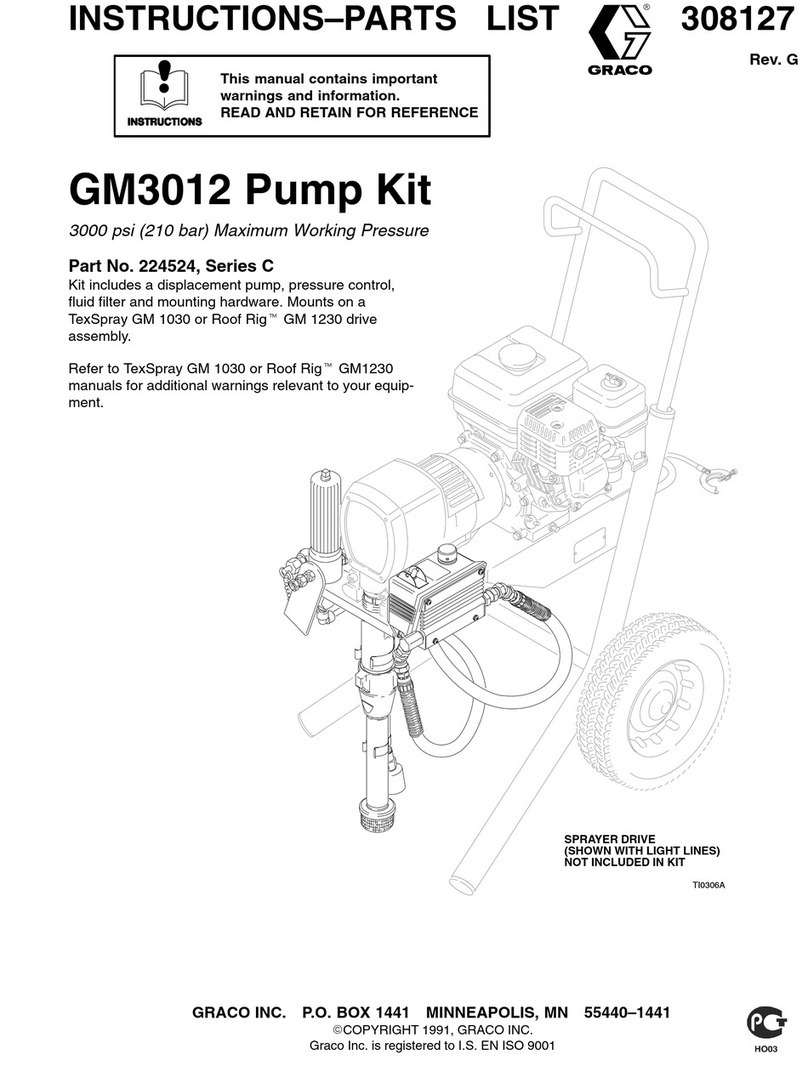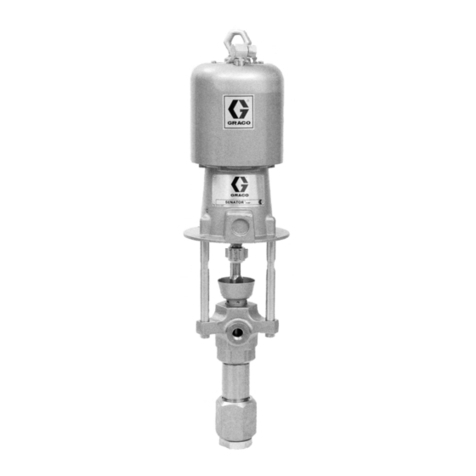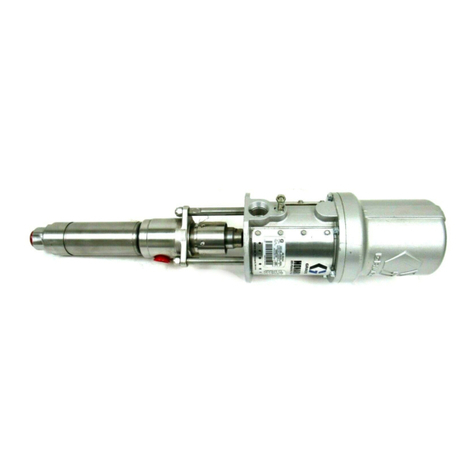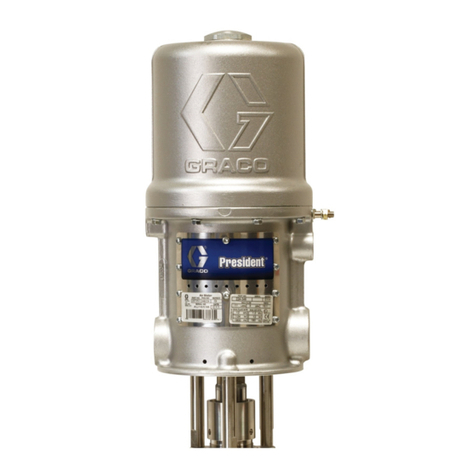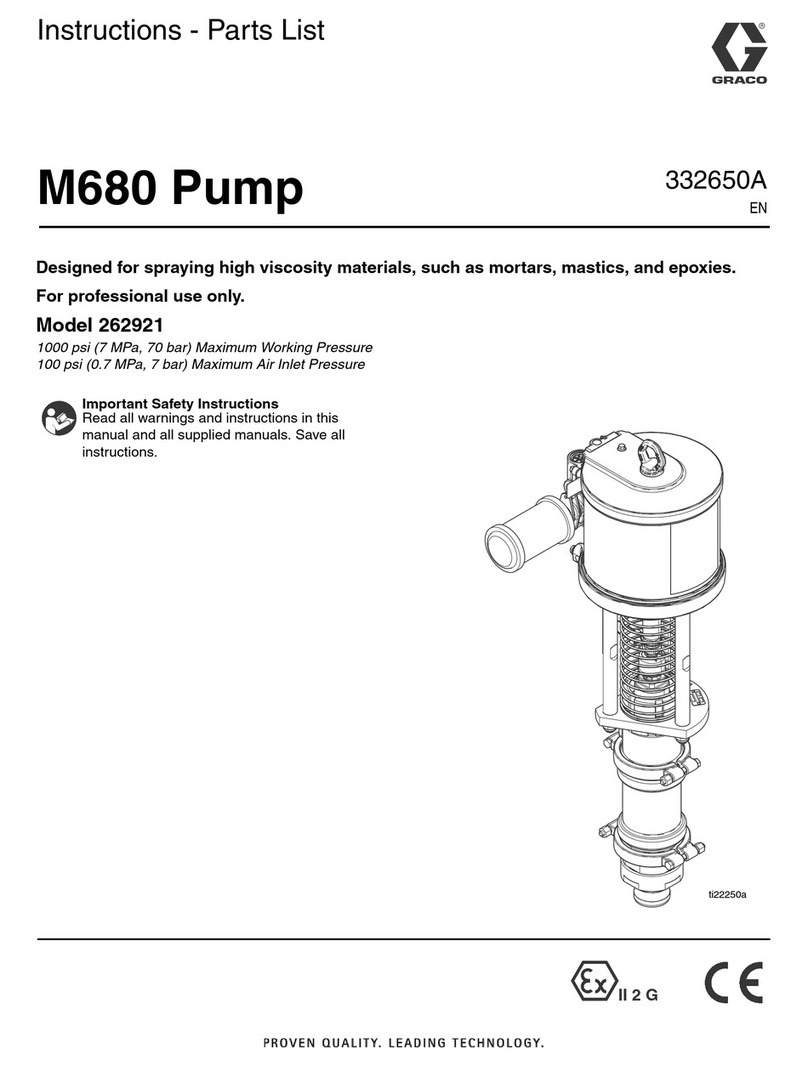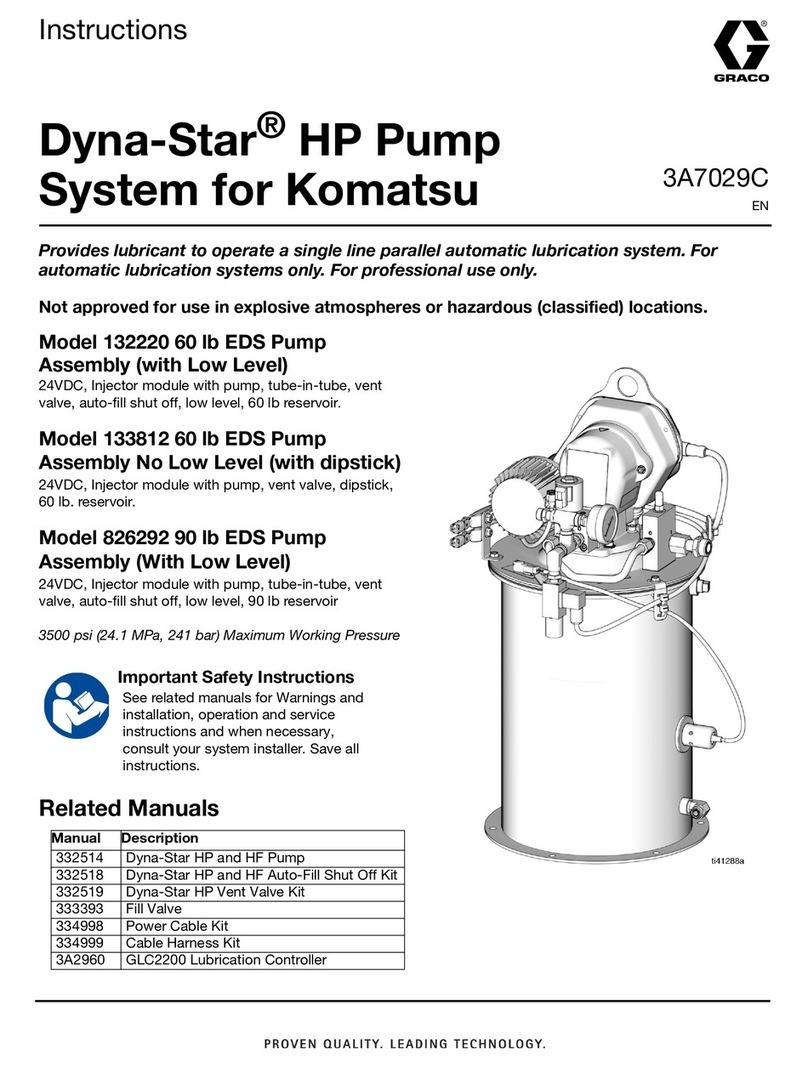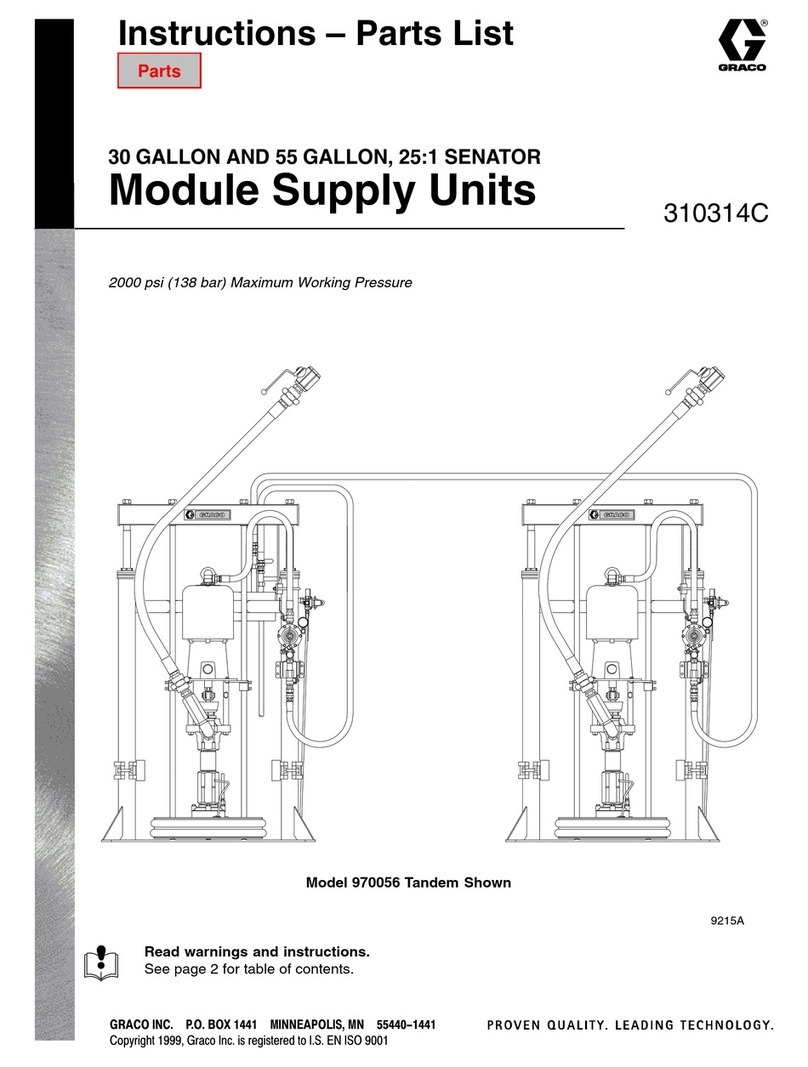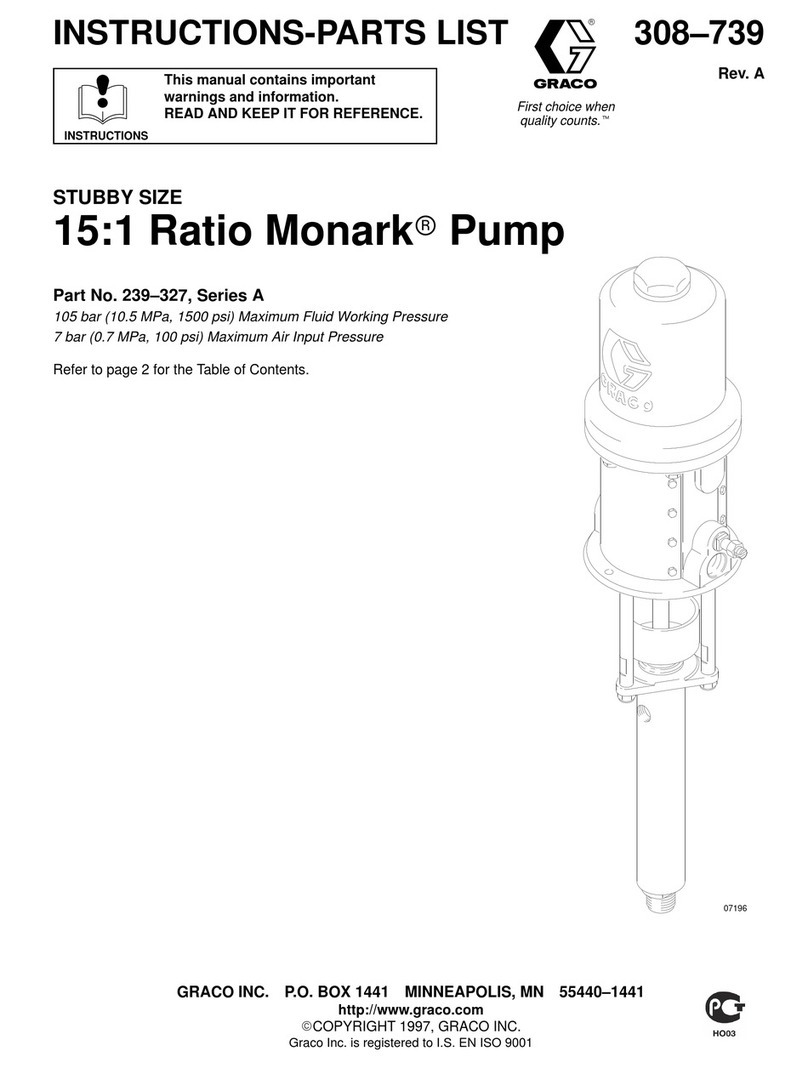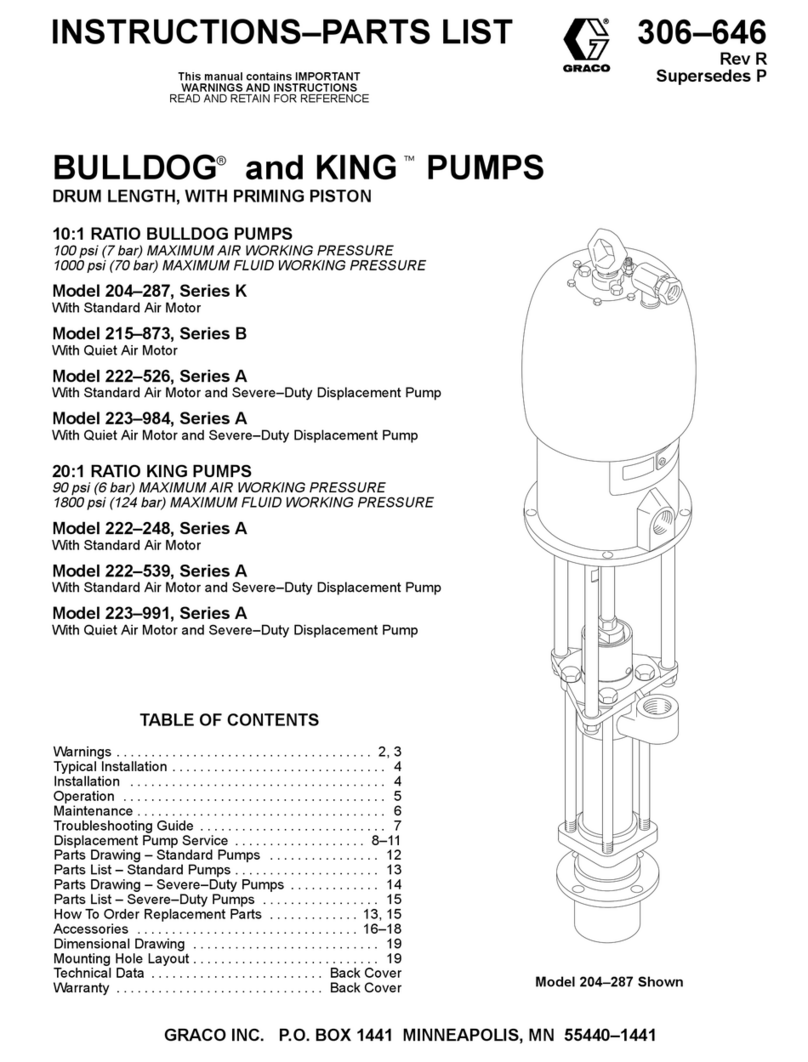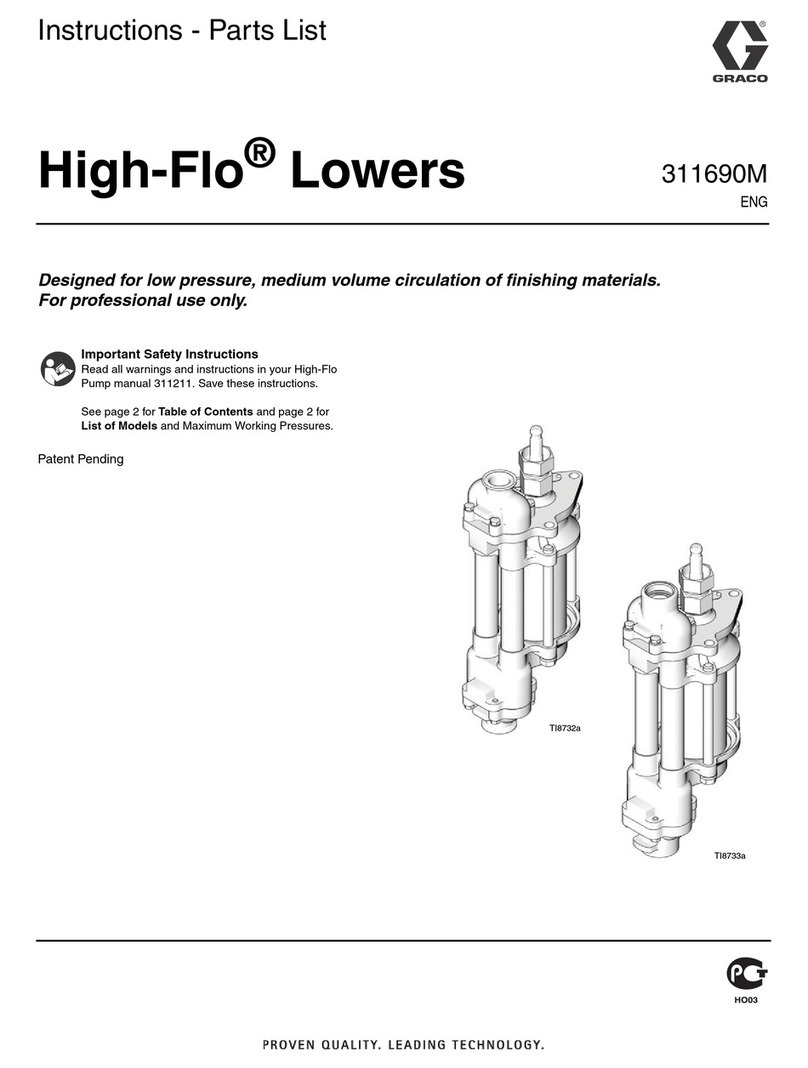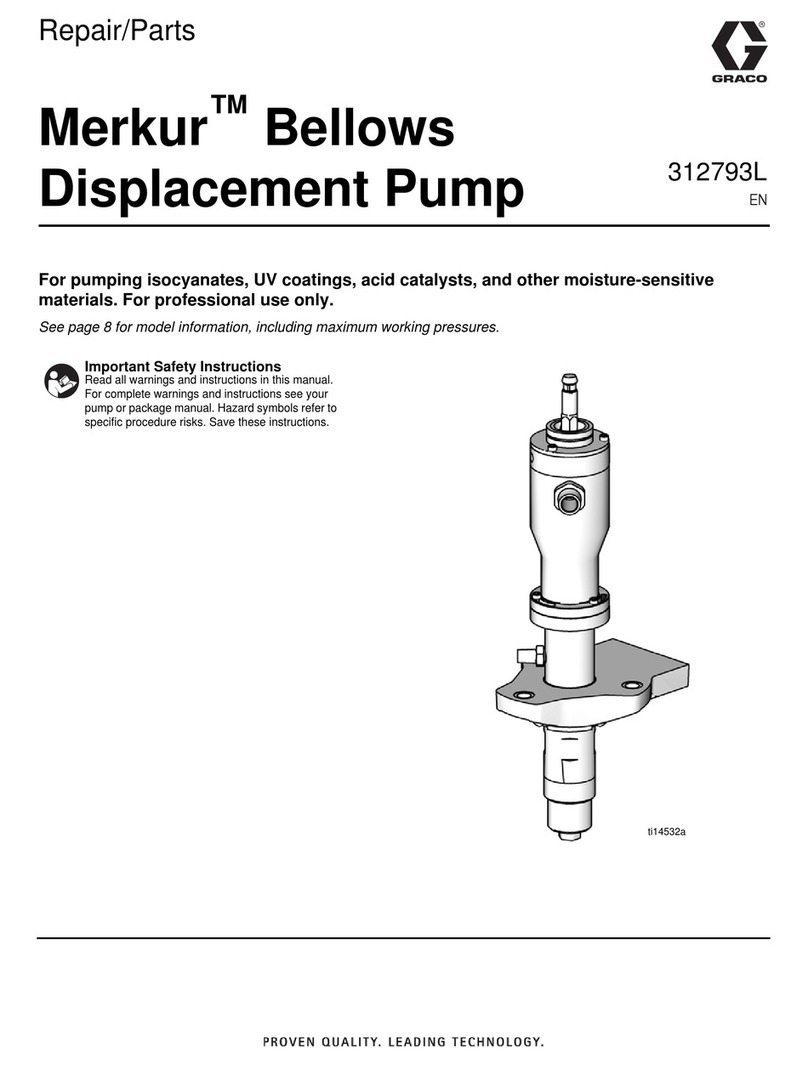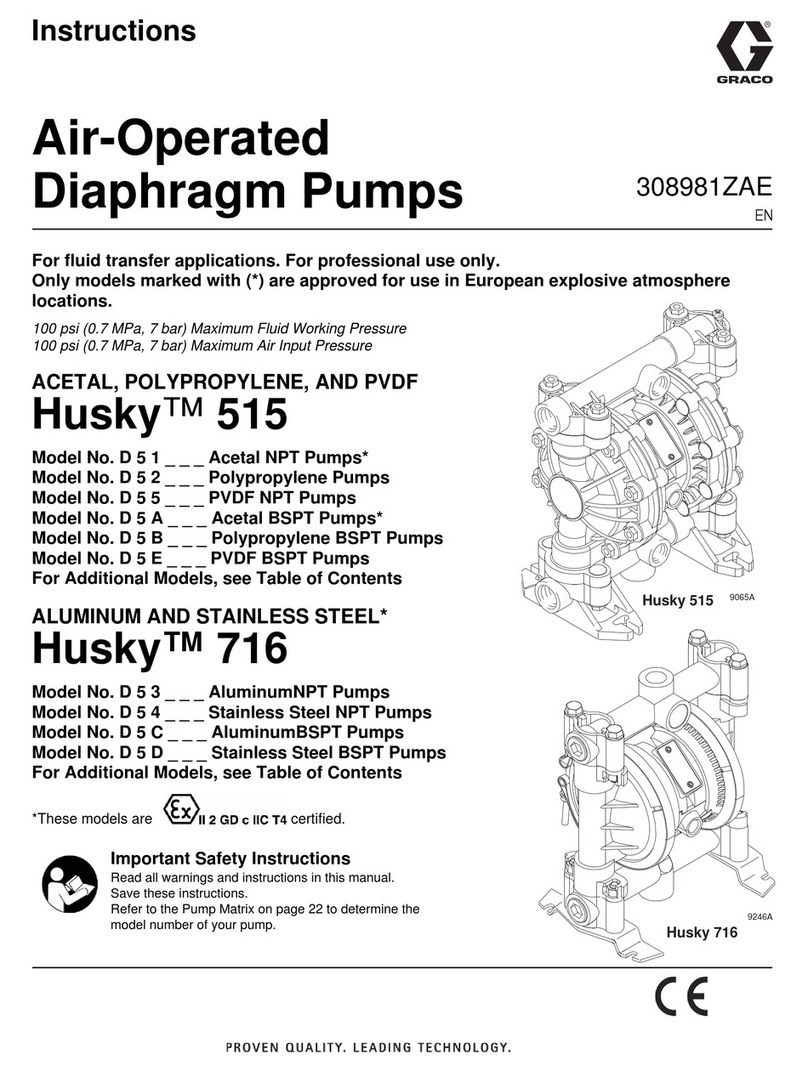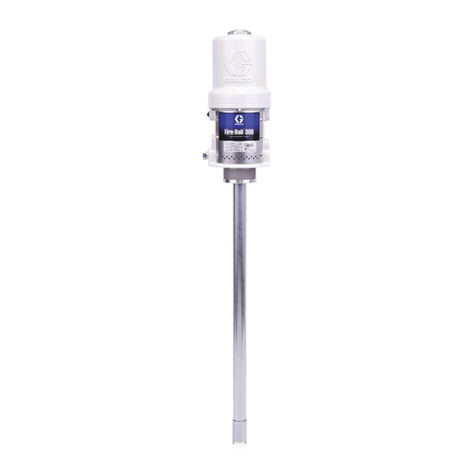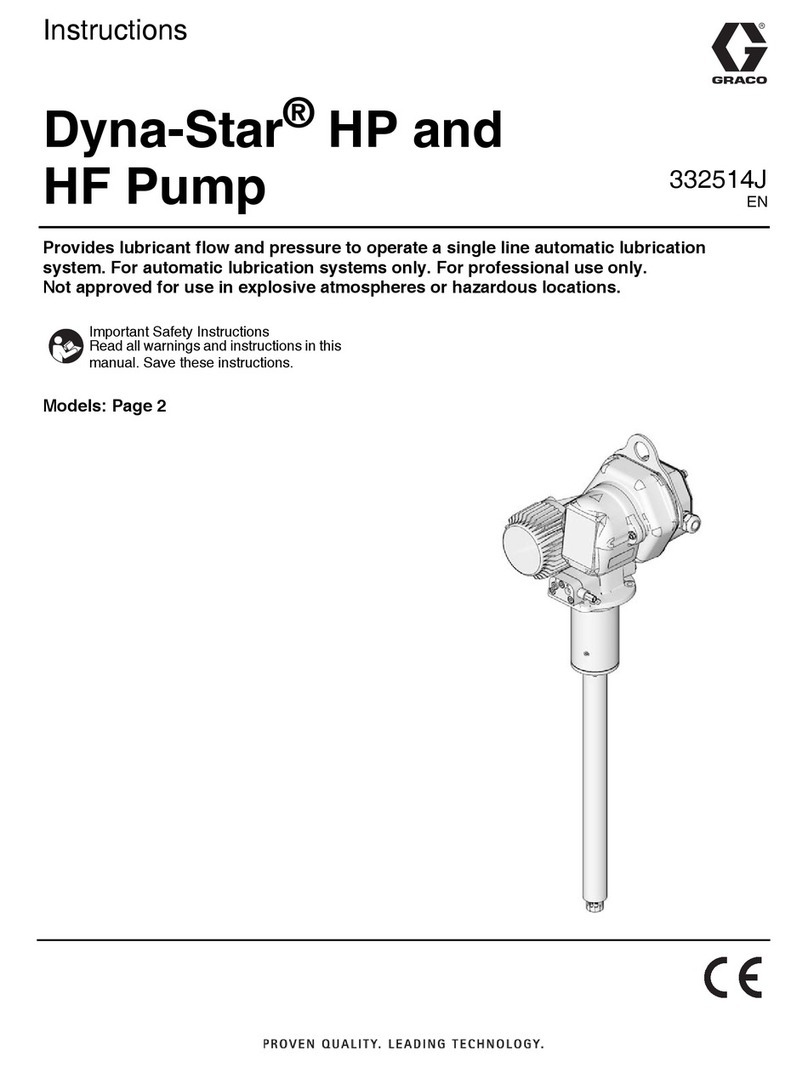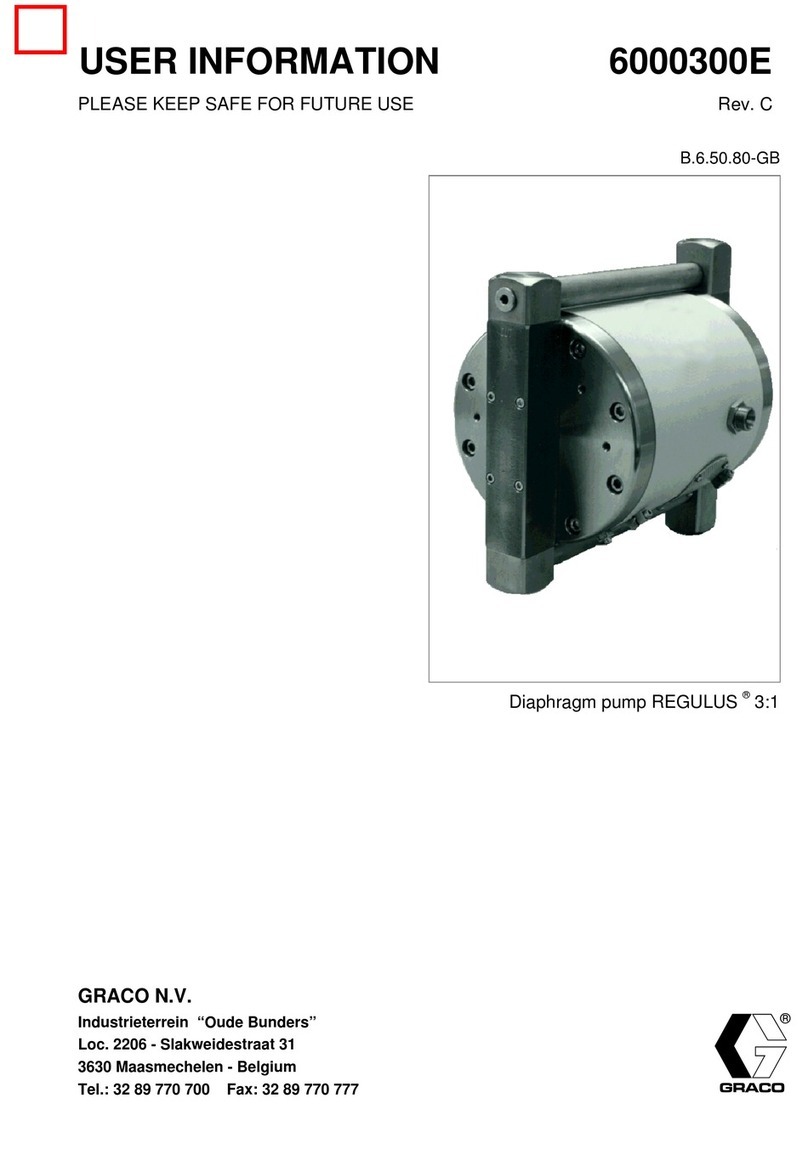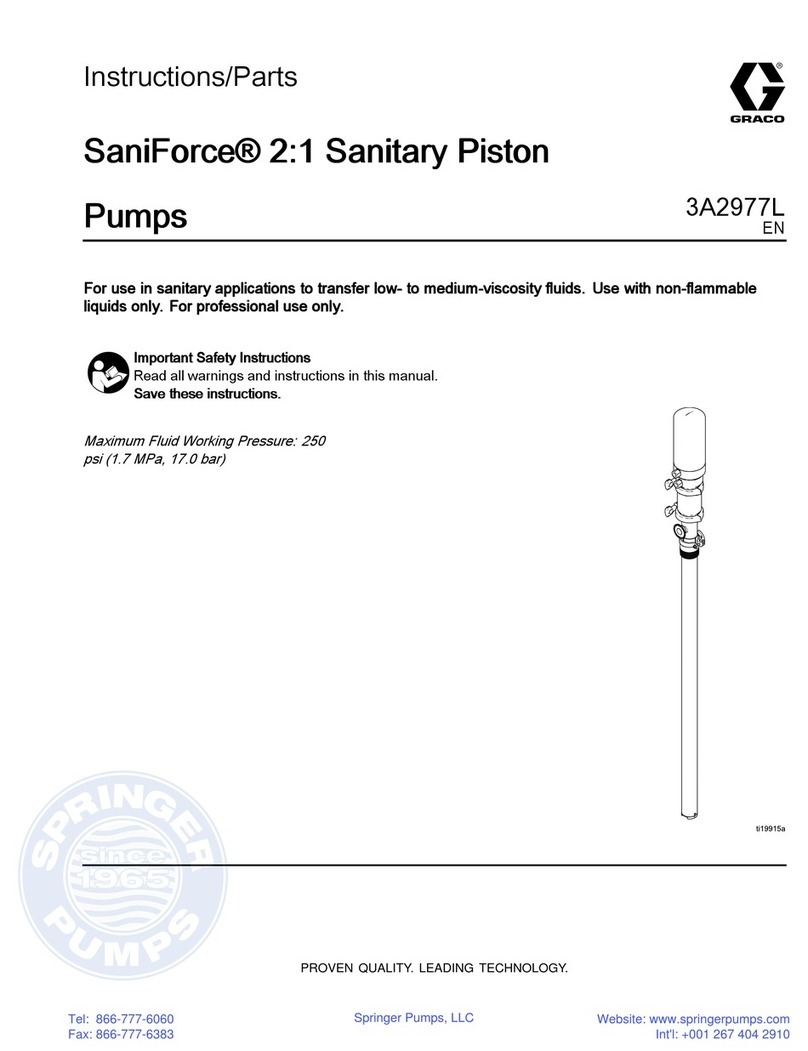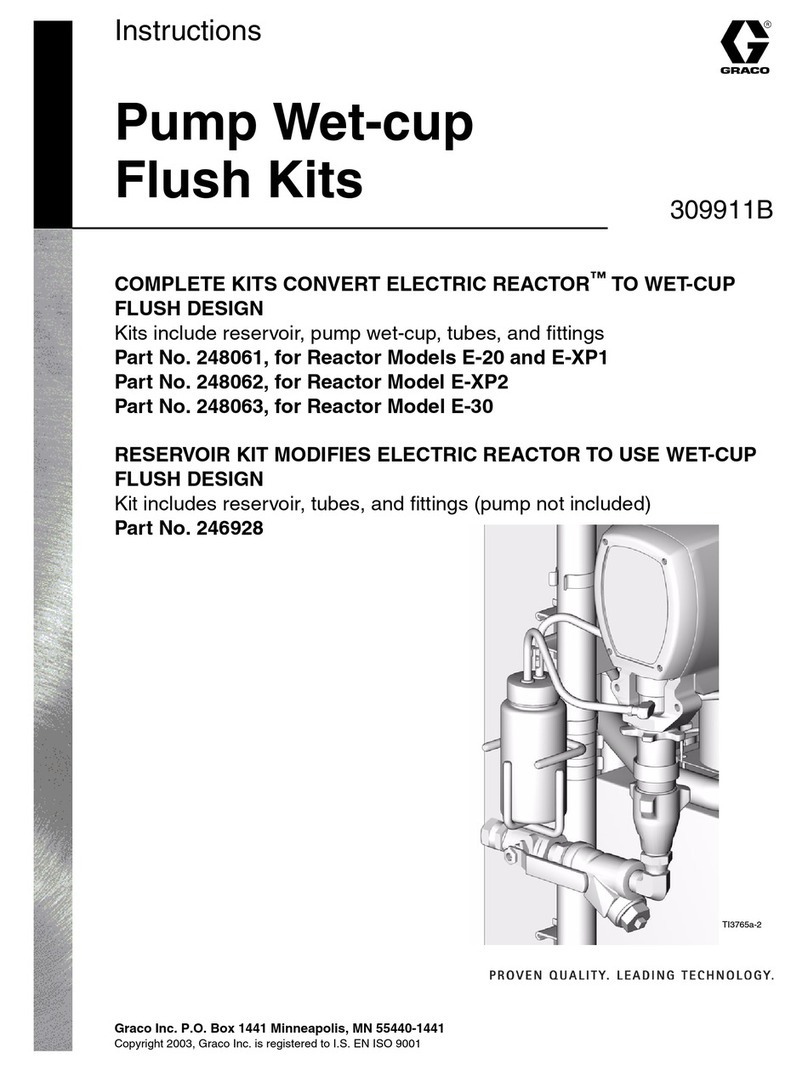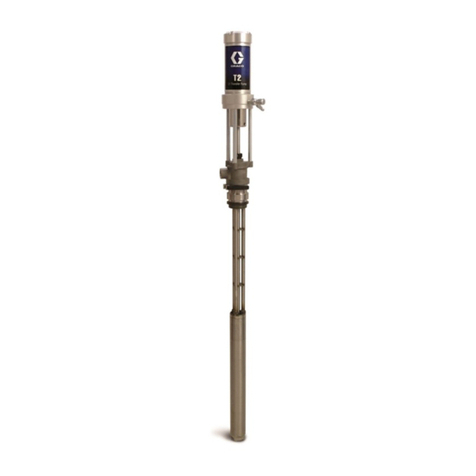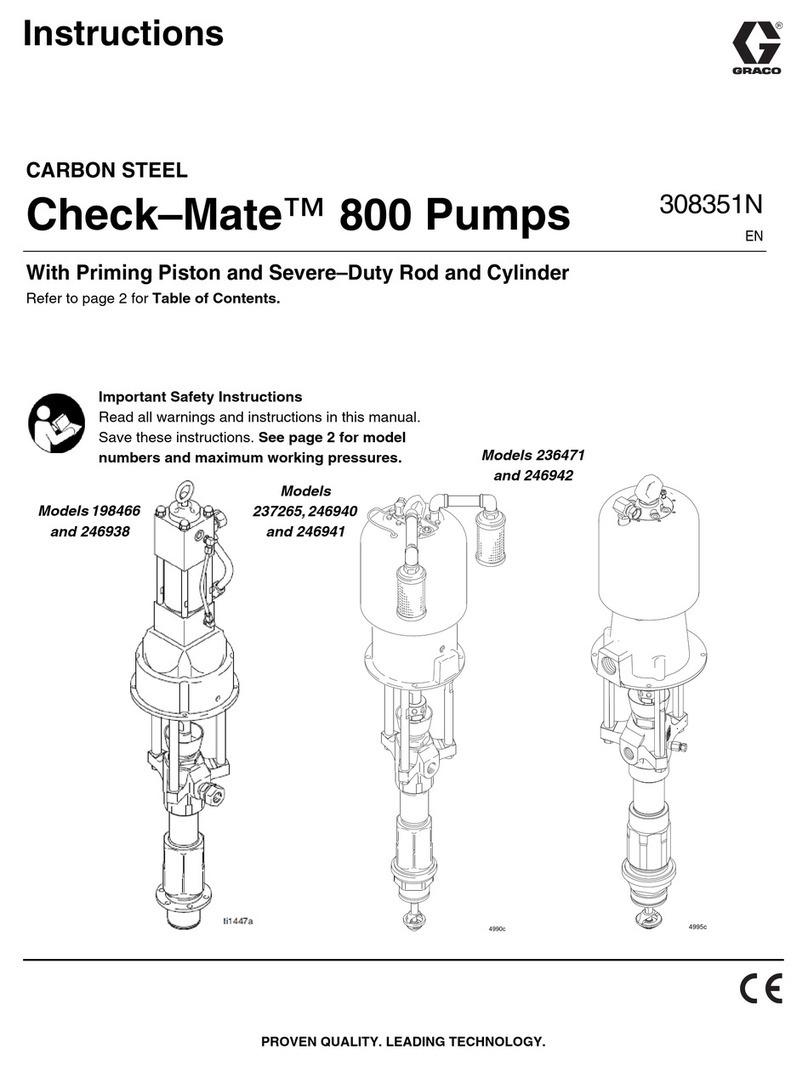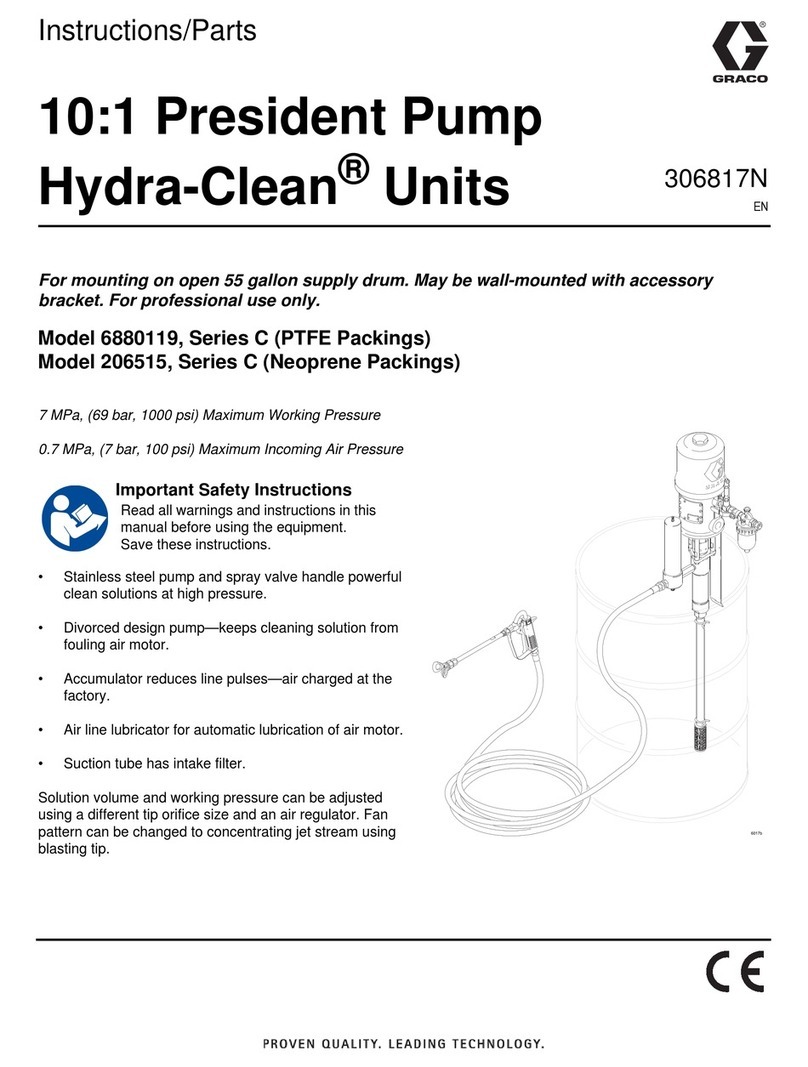
5
OPERATION
Pressure
Relief Procedure
T
o reduce the risk of serious bodily injury
, including
fluid splashing in the eyes or on the skin, or injury
from moving parts, always follow this procedure
whenever
you shut of
f the pump, when checking
or
servicing any part of the dispensing system, when
installing,
cleaning or changing nozzles, and when
-
ever
you stop dispensing.
1.
Shut of
f the dispensing valve.
2. Shut of f the bleed–type master air valve (re-
quired
in your system), on the main air line.
3.
Close the bleed–type master air valve
(supplied
with your pump).
4. Trigger
the dispensing valve to relieve pressure.
If you suspect that the dispensing valve, nozzle or
hose
is completely clogged, or that pressure has not
been fully relieved after following the steps above,
VERY
SLOWL
Y open the pump bleeder valve, hav
-
ing a container ready to catch the drainage. Leave
the
pump bleeder valve open
until you are ready to
dispense again. VER Y SLOWLY loosen the hose
end coupling and relieve pressure gradually , then
loosen
completely
. Now clear the nozzle or hose.
WARNING
Keep
hands and fingers away from the priming pis
-
ton
and pump intake during operation and whenever
the
pump is charged with air
. During operation, the
priming
piston extends beyond the intake housing
to
pull
material into the pump, and can severely injure
or
amputate a
hand or finger caught between it and
the
intake housing. Always follow the
Pressure Re
-
lief Procedure W arning above before checking,
clearing, cleaning, flushing or servicing any part of
the
pump.
The
air motor piston and fluid piston (located inside
the
air motor cylinder and coupling) also move when
air
is supplied to the motor
. Do not place your hand
or
fingers into the air motor coupling cavity while the
pump
is operating.
As the ram is raised and lowered, the wiper plate,
ram tubes, and pump mounting bracket move. T o
reduce
the
risk of pinching or amputation of fingers,
keep
your hands away from the
wiper plate, lip of the
fluid can, pump bracket and ram tubes while the
pump
is operating.
To reduce the risk of serious injury and damage to
equipment, DO NOT shut of f the air supply to the
ram
when the ram
is raised. Doing so will cause the
pump
to fall uncontrolled to the bottom.
WARNING
Starting and Adjusting the Ram
1.
Refer to Fig 1. Be sure all air regulators and bleed–
type air valves are closed.
2. Open
the air valve
in the main air line and set the ram
air
regulator (227b) to 2 bar (28 psi). Set the ram di
-
rector valve switch (236) to the UP position and let
the
ram rise to its full height. T
o change the speed at
which
the ram raises and lowers, adjust the air regu
-
lator
to increase or decrease the air volume.
3. Check
that the fluid can is not dented or out of shape,
which
will damage the wiper plate
and cause leakage
around
the wiper
.
Cut of
f the top of the fluid can with
the
can opener
, or remove the bottom of the can. Be
sure
that the edge is free of burrs, which will damage
the wiper plate. If necessary , bend the edge back
with
a pliers so the wiper plate will enter the can easi
-
ly.
Lubricate the wiper
ring (305) to help the plate en
-
ter
the can easily
.
4. Set
a full can of fluid on the ram base, centering it un
-
der
the wiper plate (300).
5. Loosen
the wiper plate bleed valve (303) enough
to
allow air trapped under the wiper plate to escape.
With
your hands away from the lip of the can and the
wiper
plate, set
the director valve switch (236) to the
DOWN position and lower the ram until the wiper
plate
enters the can. Reduce the air pressure when
the plate enters the can.
NOTE: If the wiper plate does not enter the can easily ,
increase the ram pressure; once it enters the
can,
immediately reduce the pressure.
6. Continue to lower the ram until fluid appears at the
wiper plate vent hole. Tighten the wiper plate bleed
valve
(303) securely
. See Fig 1.
7. Clamp the can in place with the clamps (224) and
wing
screws (239), being sure the
clamp catches the
lip
of the can.
Priming the Pump and Pumping Fluid
1. Be
sure the pump air regulator (227a) is closed. Then
set
the ram air regulator (227b) to about 1.5 bar
(22
psi).
Set the director valve switch (236) to DOWN.
2. Open
the bleed–type master air valve (208). Set the
pump
air regulator (227a) to 2.0 bar (28 psi).
3. Open the pump bleeder valve (125) to allow air to
bleed
from the pump. When the pump is fully
primed,
close
the valve.
4. Keep the director valve switch (236) in the DOWN
position
while the pump is operating.
NOTE: Adjust
the air pressure to the ram as needed, but
DO NOT increase it to a level where fluid is
forced
past the wiper plate.
Changing Fluid Cans
1. Stop the pump. Close the bleed–type master air
valve (208), but leave air pressure on to the ram.
Open
the dispensing valve and relieve all fluid pres
-
sure
in the system.
2.
Set the director valve switch (236) to UP
.
3. Push in the air assist valve (218) and hold it in until
the
wiper plate clears the top of the can.
4. Loosen
the clamps (224) and remove the empty can.
Set
the full
can on the ram base and position it under
the
wiper plate.
5. Lower
the ram and adjust the position of the can rela
-
tive
to the wiper plate, as explained under
“Starting
and
Adjusting the Ram”.
Clamp the can in place.
